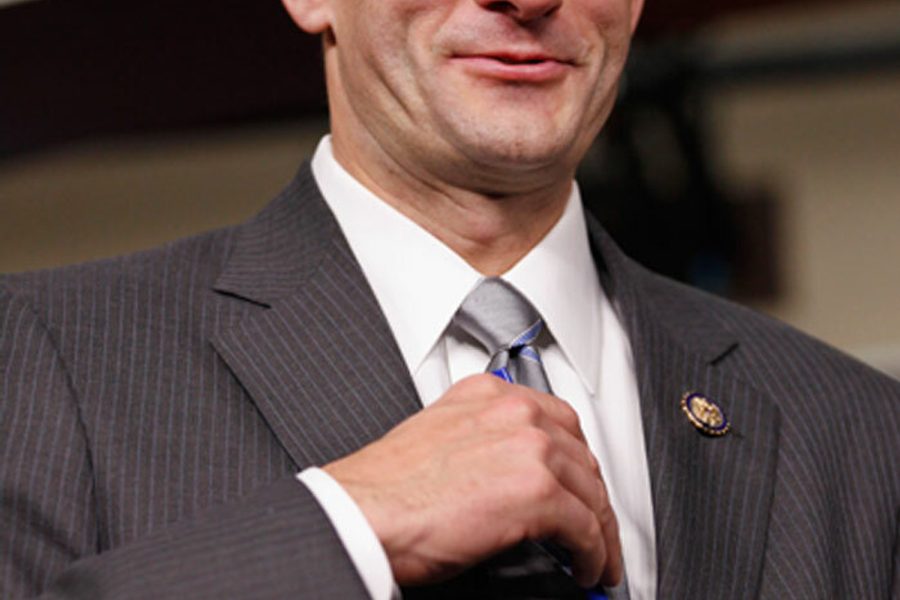
Federal unemployment benefits — and the jobless families relying upon them for survival — have long been the subject of all-out attacks by Republicans, typified by House Budget Chairman Paul Ryan’s (R-Wis.) remark, “The safety net should not become a hammock.”
The war of words has been backed up by a landslide of legislative proposals to make the lives of the jobless harder — for example, a proposed February 29 cut-off of extended unemployment benefits that would hit about 2 million jobless workers and their families.
Republicans threatened the cut-off unless Democrats in Congress buckled and accepted a set of onerous new conditions — detailed below — for receiving unemployment benefits.
However, as of Tuesday night a House-Senate conference committee reached a tenative deal under which Democrats and Republicans agreed to extend unemployment benefits to 75 weeks, maintain the payroll tax reduction (worth about $40 a week to a typical worker) and create higher Medicare payments to doctors being underpaid by the system.
Republicans have long attempted to isolate the unemployment-benefits extension so that they could inject a set of new rules stigmatizing the jobless while reducing their eligibility for extended federal benefits. This comes at a time when numerous states have cut their share of unemployment insurance to reduce budget shortfalls.
Forcing the GOP to accept the extended unemployment insurance benefits as part of the package was widely viewed as a victory for working people and the Democrats, and a setback for congressional Republicans increasingly disoriented by their record-low approval rating of 10 percent. Still, the Republicans managed to “make Democrats pay for the added unemployment benefits through changes in federal pensions,” the New York Times reported.
The Republicans’ proposed new rules included imposing mandatory drug testing of unemployment insurance claimants, thereby suggesting that workers’ jobless status was due to their use of illegal drugs rather than the shortage of jobs.
The myth that the unemployed are too drug-addled or too comfortable living on unemployment benefits has become pervasive among Republicans. Florida Gov. Rick Scott ® claimed that drug use was more widespread among recipients of unemployment benfits and that drug-testing would save the state significant amounts of money.
The truth is quite different, as ThinkProgress noted:
Only 2 percent of welfare recipients failed drug tests, meaning the state must reimburse the cost of the $30 drug tests to the 96 percent of recipients who passed drug tests (two percent did not take the tests).
After reimbursements, the state’s savings will be almost negligible, the Tampa Tribune reports:Cost of the tests averages about $30. Assuming that 1,000 to 1,500 applicants take the test every month, the state will owe about $28,800-$43,200 monthly in reimbursements to those who test drug-free.
Over 12 months, the money saved on all rejected applicants would add up to $40,800 to $60,000 for a program that state analysts have predicted will cost $178 million this fiscal year.
Other GOP proposals included:
• Forcing jobless workers pay for their re-employment services.
• Denial of benefits to those not fortunate enough to finish high school or GED.
• Forcing states to reduce benefits and divert unemployment benefit funds to other uses.
Economist Heidi Schierholz of the Economic Policy Institute told In These Times that this blame-the-victim approach to massive and prolonged unemployment draws on a narrative that jobless Americans are unemployed because they failed as individuals to acquire enough skills.
This widespread narrative (see here , here, and here) is shared by both liberals and conservative, although liberals stress educational and training solutions and hard-right conservatives press for more stringent requirements to receive any unemployment benefits.
“These proposed requirements feed into the fallacy that most unemployed workers don’t have the right skills, which is not the case,” she stated. “There is a lack of employment for workers across the board, across all educational levels. Unemployment levels may be lower for college-educated workers, but it’s at least twice as high for the college-educated since the recession began.”
Proposals for both re-training workers and restricting unemployment benefits are unlikely to have any positive impact on the economy in the near future, although increasing workers’ skill levels should always be a priority, Schierholz adds. “These ideas simply aren’t economically meaningful,” she says. “There are long waiting lists for GED programs and training programs.”
The most immediate need for the economy is not “improving” workers, but in raising consumer demand. “Businesses aren’t hiring because of the lack of consumer demand. Providing unemployment benefits would add to the buying power and encourage hiring, “ Schierholz says.

I hope you found this article important. Before you leave, I want to ask you to consider supporting our work with a donation. In These Times needs readers like you to help sustain our mission. We don’t depend on—or want—corporate advertising or deep-pocketed billionaires to fund our journalism. We’re supported by you, the reader, so we can focus on covering the issues that matter most to the progressive movement without fear or compromise.
Our work isn’t hidden behind a paywall because of people like you who support our journalism. We want to keep it that way. If you value the work we do and the movements we cover, please consider donating to In These Times.







